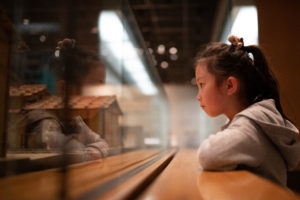Here at Learning and the Brain, we like research-informed teaching suggestions.
At the same time, we remember Prof. Dan Willingham’s timeless motto: “one study is just one study, folks.”
That is: one study might show a particular conclusion – but one study isn’t entirely persuasive.
Instead, we’d like SEVERAL studies looking at roughly the same question. If those studies all point the same direction, then we can feel increasingly confident that this conclusion has merit.
For instance:
Several years ago I blogged about an impressive study by Dr. Jay Greene. It suggested …
… that attendance at live theater improved students’ knowledge of the play (not a big surprise)
… and, it improved students’ tolerance (surprise!)
… and, it enhanced their desire see the world from another’s perspective.
Because I REALLY WANT those statements to be true, I looked at this research with extra skepticism. But I was ultimately persuaded that the study design made lots of sense.
Of course, “one study is just one study.”
It would be GREAT to see more research on this topic. Well, I have good news…
Take Two
I’ve recently come across a second study looking at the benefits of live theater — this one led by Angela Watson (no relation that I know of).*
As is often the case, this research team looked at some of the same questions, and some additional questions as well.
So, they asked:
Does live theater provide benefit for students? How about art museums? How about symphonies?
Do these cultural field trips benefit students in different demographic groups?
The Greene study looked at tolerance and “social perspective taking” – the desire to see the world from another’s perspective. Watson’s research also asked questions about conscientiousness and empathy.
So, what did they find?
Methods and Conclusions
As you can imagine, these questions require lots of logistical complexity.
We can study – say – “retrieval practice” fairly easily in a classroom. But, schlepping large groups of students to plays, museums, and symphonies takes a lot more coordination, planning, and cooperation.
Basically, these researchers had students attend different numbers of plays, symphonies, and museums: as few as one trip, or as many as six.
And, they had students fill out questionnaires. And, they followed up for two years!
So, do additional “cultural” field trips make a difference for these students?
As is so often the case, the answer is both “yes” and “no.”
So, for instance, attending the theater/symphony/museum did NOT make students more interested in going back.
And, contrary to Greene’s study, it did NOT make students more “empathetic.”
Specifically, students responded to statements like these: “After seeing a play or a movie, I have felt as though I were one of the characters.”
Their responses did not vary depending on the number of field trips they went on.
At the same time, Team Watson did find some benefits.
Attending field trips did increase “social perspective taking.”
That is: students were asked questions like “When you are angry at someone, how often do you try to ‘put yourself in his or her shoes’?”
Students who attended more field trips put on those shoes more often.
Also, female students — although not males — demonstrated higher levels of conscientiousness after participating in more cultural field trips. (Alas, this change didn’t last as long as the others.)
The news isn’t all good, but not all bad either.
What About Tolerance?
The case of “tolerance” is especially tricky.
When Watson & Co. ran the numbers, these field trips didn’t affect the students’ answers to questions like:
“Some people have views you oppose very strongly. Do you agree that these people should be allowed to come to your school and give a speech?”
So, strictly speaking, field trips didn’t increase tolerance.
However, Watson speculates that the wording of these questions was especially complicated. And, she notes that the students in this cohort had relatively low reading scores.
So, perhaps, students really did feel more tolerant, but the question’s complexity masked that change.
Watson supports this hypothesis by noticing that the students at the high end of reading comprehension DID have higher tolerance scores.
In other words: the students who understood the question better expressed higher levels of tolerance — and might reflect a truer understanding of the field trips’ effects.
TL;DR
We now have even more research showing some SEL benefits for field trips to cultural events.
This trips…
… consistently help students “put themselves in someone else’s shoes,”
… might increase students’ tolerance of others’ opinions,
… enhance girls’ conscientiousness (albeit temporarily).
We have less certain evidence that field trips enhance empathy, or that they encourage students to attend more cultural events.
Equally important: having MORE studies on one topic allows us to contemplate these SEL benefits with greater nuance and sophistication.
* To be precise, Watson’s study is a “working paper.” It hasn’t been peer reviewed in an academic journal.
Watson, A., Greene, J., Holmes Erickson, H., & Beck, M. I. (2019). Altered attitudes and actions: Social-emotional effects of multiple arts field trips.




